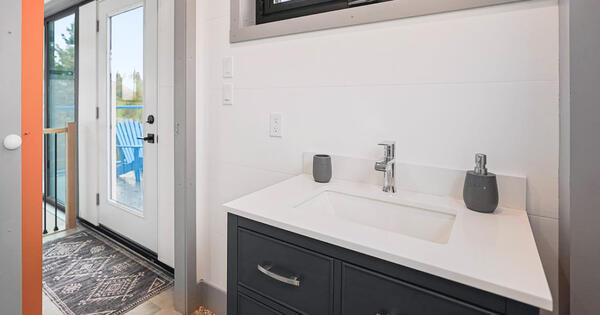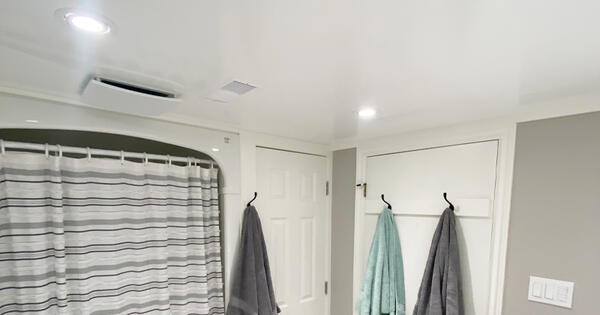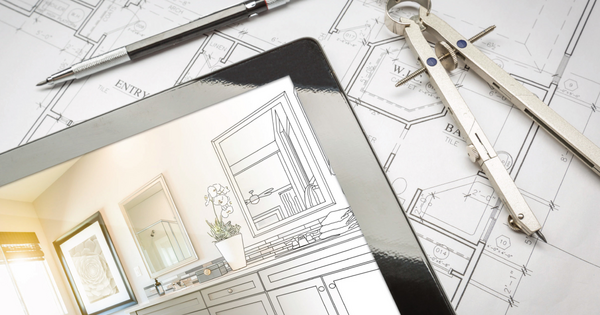Waterproofing bathroom walls is one of the most important steps in creating a functional, long-lasting space. Bathrooms naturally deal with constant humidity, splashes, and steam, which means every surface needs to be protected from moisture. Traditionally, tile has been the go-to solution for homeowners, but it’s far from the only option.
In fact, more and more people are starting to look beyond tile when updating their bathrooms. Whether it’s due to the high cost of materials and labor, the effort required to keep grout clean, or the desire for a more modern or low-maintenance look, tile isn’t always the best fit. Fortunately, there are alternative wall materials that can offer full waterproof protection without the added hassle.
Why Waterproofing Bathroom Walls Matters
Bathrooms are some of the dampest rooms in any home. Between daily showers, splashes from sinks, and lingering steam, the walls are constantly exposed to moisture. Without proper waterproofing, that moisture can quickly cause trouble, especially if you're using standard drywall or water-resistant paint that isn't truly sealed against water.
Here’s what can happen when walls aren't properly protected:
- Mold and mildew growth: Moisture trapped behind walls or within materials can create the perfect environment for mold and mildew to thrive.
- Damage to wall materials: Drywall can swell, soften, and eventually break down when it absorbs water, even if it's painted or coated.
- Peeling paint and bubbling finishes: Water can seep under paint layers, leading to blistering, peeling, and unsightly wall surfaces.
- Structural concerns: Over time, repeated exposure to moisture can compromise studs, insulation, and other parts of your home’s structure.
Choosing the right wall materials from the start can prevent these issues and help keep your bathroom clean, healthy, and protected.

The Downsides of Tile for Bathroom Walls
Tile has been a standard choice in bathroom design for decades, but it’s not without its challenges. While it offers a waterproof surface when installed correctly, tile comes with several drawbacks that can make it less appealing than some modern alternatives.
Some of the most common tile pain points include:
- High installation costs: Tile is labor-intensive to install and often requires a skilled professional, which drives up the overall cost.
- Time-consuming labor: Even small bathrooms can take days to tile properly, especially when you factor in cutting, spacing, and drying time.
- Grout lines that require ongoing maintenance: Grout is porous and can easily collect soap scum, mold, and mildew. It needs to be sealed regularly and scrubbed to stay clean.
- Risk of water getting behind tiles: If tiles aren’t sealed correctly — or if the grout cracks — moisture can seep in behind the walls, causing hidden damage over time.
Because of these issues, many homeowners are starting to look for simpler, more reliable solutions for waterproofing bathroom walls.
Waterproofing Bathroom Walls Without Tile: What Are the Alternatives?
If you’re looking to avoid the hassle of tile, you’re not alone. There are several materials available today that offer effective waterproofing for bathroom walls — without the mess, expense, or upkeep that tile often brings.
Here are some of the most popular tile-free options homeowners consider:
- Drywall with water-resistant paint: This is a low-cost, DIY-friendly option for areas outside the direct splash zone. However, even moisture-resistant drywall can eventually absorb water, leading to crumbling, bubbling, or mold growth over time.
- PVC wall panels: These easy to install panels offer a truly waterproof surface with no need for grout, making them easier to clean and maintain.
- Acrylic or fiberglass shower surrounds: Often found in prefabricated kits, these are fully waterproof and relatively affordable. That said, they tend to offer limited style choices and don’t always blend well with more custom bathroom designs.
- Cement board with a waterproof coating: Typically used behind tile or decorative panels, this creates a water-impermeable barrier. It’s durable, but the installation process can be more complex and usually requires an additional finish layer.
Not all of these solutions are equal when it comes to durability, aesthetics, or ease of installation. Choosing the right one depends on how much moisture your walls will be exposed to and how much time and money you’re willing to invest.
What to Look for in a Tile-Free Waterproof Wall Solution
With so many alternatives to tile on the market, it can be tough to know which ones actually stand up to bathroom conditions. While price and appearance matter, performance should come first, especially in rooms where moisture is constant.
When evaluating tile-free options for waterproofing bathroom walls, here’s what you should prioritize:
- 100% waterproof performance: Look for materials that are completely impervious to water, not just water-resistant.
- Mold and mildew resistance: Choose surfaces that won’t support microbial growth, even in humid or wet conditions.
- Easy to clean: Smooth, non-porous finishes are best since they won’t trap soap scum or require scrubbing.
- Long lifespan: A good bathroom wall material should hold up for years without cracking, warping, or showing wear.
- Simple installation: Panels that install quickly with fewer steps and tools can save time and reduce labor costs.
- Aesthetic compatibility: You’ll want something that fits your bathroom’s style and doesn’t feel like a compromise.
If a product checks all these boxes, you won’t only get lasting protection. You’ll also end up with a bathroom that looks great and performs even better.



Trusscore Wall&CeilingBoard as a Bathroom Waterproofing Solution
One of the most effective alternatives to tile for waterproofing bathroom walls is Trusscore Wall&CeilingBoard. It’s a PVC-based wall and ceiling panel system designed to perform in environments where moisture is a constant concern, making it a smart choice for bathrooms of all sizes.
Here’s what makes Trusscore a standout option:
- Fully waterproof surface: Unlike water-resistant materials, Trusscore is 100% waterproof and won’t absorb moisture — even when installed in high-humidity areas like bathrooms and laundry rooms.
- Mold and mildew won’t grow: The panels don’t support microbial growth, which helps keep your bathroom cleaner and healthier over time.
- Wipe-clean finish: The smooth, non-porous surface resists staining and scratching, and it’s easy to clean with just soap and water. No special products are required.
- Fast, straightforward installation: Trusscore installs quickly over bare studs or existing drywall, using a tongue-and-groove system that creates a secure, seamless finish.
- One solution for walls, ceilings, and showers: You don’t need separate materials for different surfaces. Trusscore is built to handle every inch of your bathroom, which simplifies the install and keeps the look consistent.
- Modern, grout-free appearance: The panels offer a clean, contemporary finish without the maintenance headaches that come with grout lines.
If you’re rethinking tile and want a bathroom that’s easy to maintain, fast to install, and built to last, Trusscore Wall&CeilingBoard could be the answer you’re looking for.
Installing Trusscore in a Bathroom: What to Expect
If you're considering waterproofing bathroom walls with Trusscore, the good news is that installation is straightforward — even for homeowners who are comfortable with basic tools and light renovation projects. Whether you’re updating a powder room or tackling a full shower surround, Trusscore makes the process faster and simpler than tile.
Here’s what to expect when installing Trusscore Wall&CeilingBoard in your bathroom:
- DIY-friendly setup: If you can measure, cut, and use a drill or driver, you can likely install Trusscore yourself. The panels are lightweight and easy to handle, and they install over bare studs or existing drywall.
- Seamless interlocking system: Trusscore panels lock together with a tongue-and-groove design that minimizes visible seams and reduces the risk of water intrusion to insulation or framing.
- Suitable for wet and dry zones: With the proper trim and silicone sealant at panel joints, Trusscore is fully waterproof and ideal for wet areas, including shower surrounds.
- Built for long-term bathroom use: Trusscore is made from PVC, so it won’t absorb water, swell, or degrade over time. It’s also resistant to chemicals found in soaps, shampoos, and common bathroom cleaners.
- Easy to combine with other finishes: Want to use Trusscore for a clean wainscot and finish the top half of the wall with paint or wallpaper? No problem — Trusscore pairs well with a variety of materials and design choices.
For a detailed walkthrough on using Trusscore in a shower, including trim types and sealing tips, check out the Installing Trusscore in Shower Applications guide.
Waterproofing bathroom walls doesn’t have to mean spending thousands on tile or dealing with the ongoing maintenance that comes with it. There are better, easier, and more modern alternatives available, especially if you’re looking for something that performs well and keeps your bathroom looking great for years.
Trusscore Wall&CeilingBoard offers homeowners a simple, durable, and stylish way to waterproof bathroom walls. It’s 100% waterproof, resists mold and mildew, installs quickly, and eliminates the headaches of grout lines and tile maintenance. Whether you're redoing your entire bathroom or just looking for a cleaner solution behind the sink or in the shower, Trusscore delivers the balance of performance and simplicity that makes it a smart choice.






